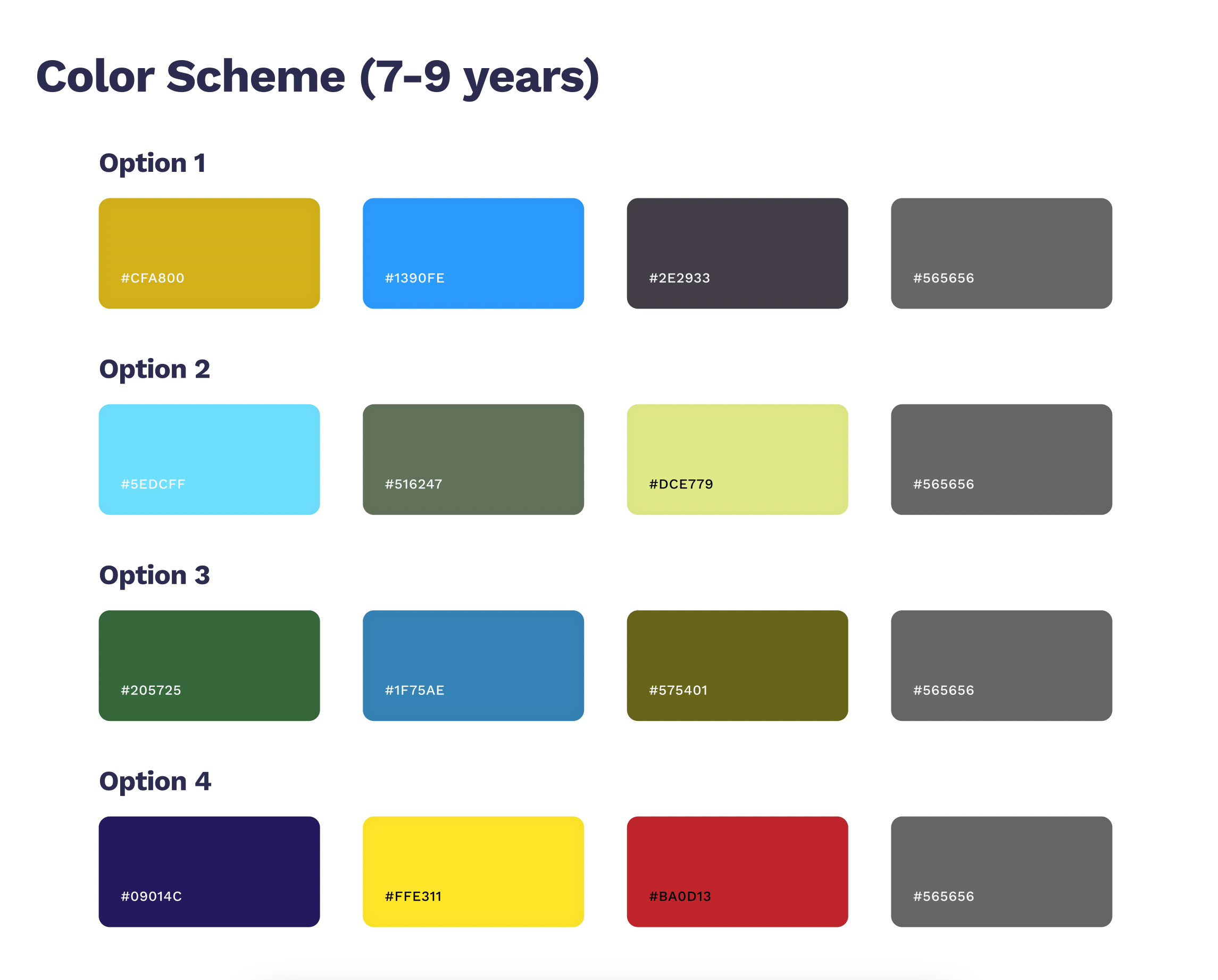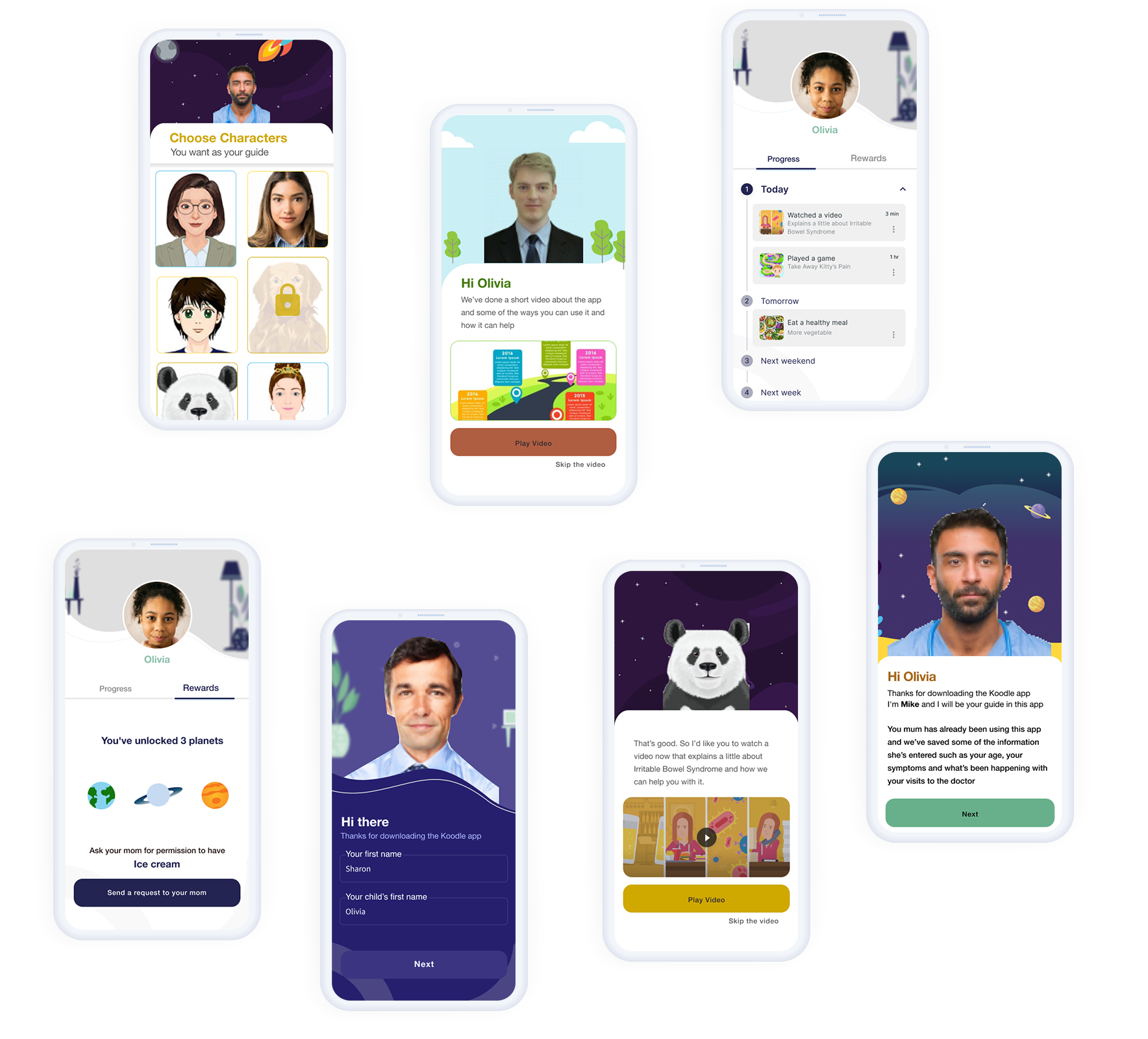
Design System ——
Koodle system
is an AI-driven psychological therapy service being developed to aid children and young people who suffer from mild psychological problems (e.g. social anxiety) that cause gastrointestinal symptoms. The app will also help parents deal with, monitor, and overcome issues
—— Due to a Non-Disclosure Agreement, information on this project is limited.
— Project Type
Design System
Funded By: SBRI - the Small Business Research Initiative - GOV.UK
— Role
User Experience Designer
Workshop Facilitator
— Project Date
July-Sep 2021
— Tools Used
Figma
Adobe Suite (PS, AI)
Miro
Anima
Project Summary
Half of the GP referrals to children's hospitals concern uncomfortable bodily symptoms without underlying disease in Scotland with a considerable impact on society. Evidence indicates that computerised cognitive behavioural therapy is as effective for mild-moderate depression and anxiety as that delivered by a skilled therapist.
Therefore, the Koodle system is an AI-driven psychological therapy service for young people that helps them manage their symptoms better.
This project aims to develop a design system using a co-design approach, including desk research, expert workshop and user workshops.

The Problem
The opportunity
In Scotland, 50% of GP referrals to children’s hospitals concern uncomfortable bodily symptoms without underlying disease.
Impact includes significant school absence, reduced socialising and engagement in activities, increased anxiety and frustration with ongoing time off work for parents and carers.
The National Institute for Health and Care Excellence (NICE) reviewed all research evidence and found computerised cognitive behavioural therapy to be as effective for mild-moderate depression and anxiety as that delivered by a skilled therapist.
The process
Koodle aims at addressing this gap by providing a personalised and tailored experience for children (and parents/carers) to overcome these issues.
Using a co-design approach with different methods to develop the appropriate design system for Koodle users, particularly with regards to visuals and user preferences.
Desk research
Age group preferences
Visual research
Gamification
Expert workshop
To design and develop the materials for the workshops
User Workshops
With 5 age groups (7-9, 10-12, 13-14, 15-17, adults)







Main Features and requirements
for the Design System
Talking Avatar
This is the “agent”’s representation that would be guiding the user through different stages. The client has a contract with one of the Text-to-Speech services. So, we are obligated to test the avatar designs provided by them only.
Progress review
For child
For parents
Content
Videos
Animated diagrams
Questions template
Gamified rewards
—— Due to the nature of the Koodle system (adoption of machine reasoning) and its current stage (prototyping)
archetypes have been developed based on
the most common paths that patients go through
based on the expert workshop and data provided by the client
Archetypes
For the archetypes, we have adapted the language of the story according to each age group and their gender to feel more empathy towards the user
Olivia Hunter, 13 years old (child)
Olivia lives in Edinburg with her mum, dad and brother Tim. Olivia has been experiencing significant abdominal pain for a few months. She missed the odd day of school because she and her family used to believe that when her symptoms were uncomfortable, it was better to stay at home and rest. These symptoms can often keep her awake at night and she catches up with her sleep during the day. She has become increasingly worried about falling behind and she feels miserable about missing her friends and the things she used to do. She wants to get better!
Sharon Hunter, 38 years old (mum)
She is keen on following Olivia’s progress and helping her deal with her pain.
Iterations! Iterations! ——-
3 sessions per age group to capture the look, feel and engagement of the Koodle design system in the early stages of the design process, by adopting co-design and A/B testing methods with high-fidelity prototypes
The findings
Talking Avatar
The avatar seems to be a trustworthy
Animals are popular, especially (panda)
Options for gendered avatars should be included
Since the system used text-to-speech technology, users preferred the avatar as a “drawing” style
Avatar options
—- Quotes from the user workshops“Sometimes you can trust a dog more than a person” and
“less embarrassing”
Content
(videos, animated diagrams, questions template)
Parents should have an option to skip some sort of content
Good to have a summary of the answers from time to time
It’s better to highlight the main parts in the text - especially for younger kids
Videos appear to be likeable by all age groups
Progress review
Children need a space where they can review their progress
Parents need a space where they can review and track their child's progress
Gamified Rewards
A mixture of real-world rewards (e.g. eat ice cream, buy a new book) and virtual rewards (e.g. unlock new characters/content, badges) has been suggested
Customisation
Due to the nature of the app and the need to use it daily during the treatment period, the possibilities for customisation are essential to users. Most of the areas users want to customise are avatars, background themes and colour schemes
The Design System
Style Guide
To ensure the accessibility of the design system, the "Able" plugin was used, and the results were between AAA and AA
Themes
Based on users' suggestions and preferences






























